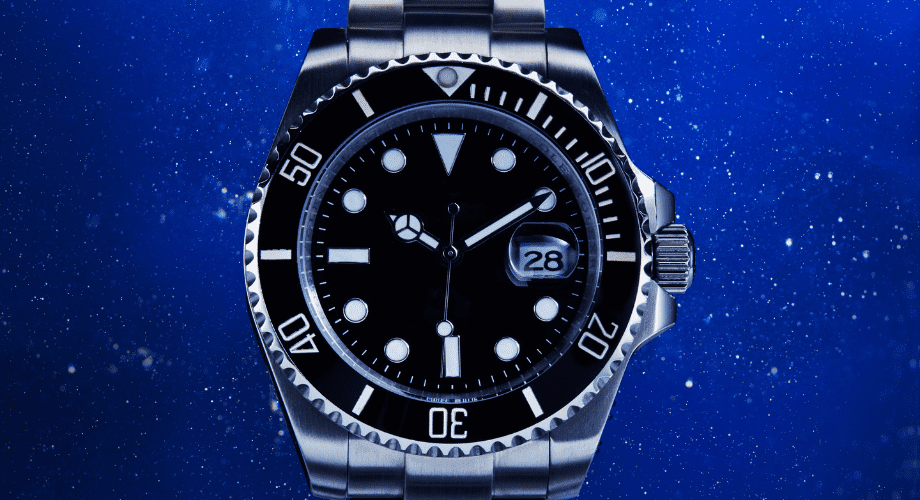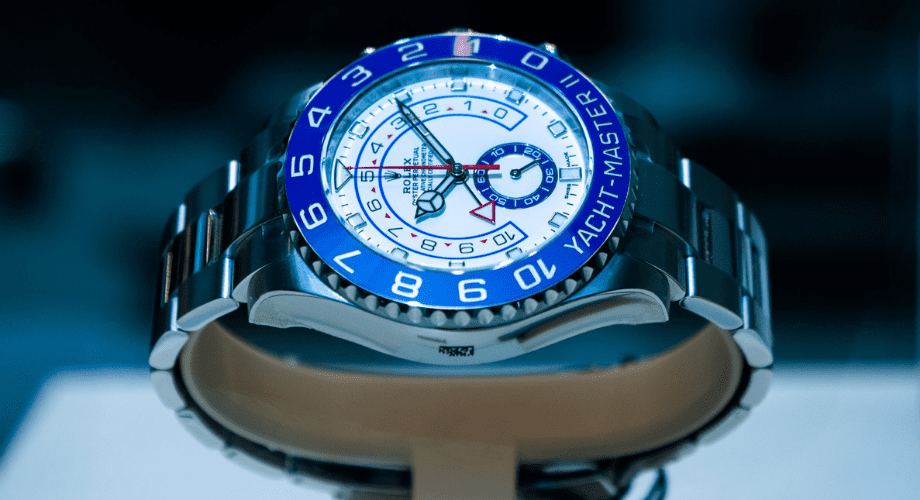
I believe that one of the most underrated parts of a watch is the bezel. Bezels serve an essential purpose on a watch, and there are various kinds of bezels. Bezels are functioning parts of the watch that keep the watch in the case. But why do watches have rotating bezels? After I looked into it more, I found the reason why.
Rotating bezels enable the wearer to easily read how much time has passed within a one-hour timeframe, and there are multiple kinds of rotating bezels. The diver bezel is probably the most well-known type of bezel. The count-up and countdown bezels are also known to further certain areas of interest.
There are also bidirectional and unidirectional rotating bezels that serve different functions. Watch bezels can be clockwise or counterclockwise, depending on their purpose. If you want to know why watches have a rotating bezel, keep reading this article!
Why Do Watches Have Rotating Bezels?
The bezel encircles the crystal glass on the watch to keep it secured in place, just above the dial. It serves as part of the watch case and keeps the watch secure. They can be made of metal but can also be made with materials such as ceramic. Some bezels are stationary, while others rotate.
The purpose of a rotating bezel is to help divers measure their dive times, and can be useful in other areas like the military. However, many people wear luxury watches with rotating bezels but do not know what a bezel is or what it is used for.
Bezels have been on watches since the 1930s. Rolex came out with a rotating bezel on a watch called the Zero-graph. After the Zero-graph, the bezel has been included on all dive watches. Specific bezels and another twenty-four-hour hand can be used to show a different time zone.
Should I Get a Watch With a Rotating Bezel?
Most watches with rotating bezels perform a specific function. You could benefit from certain rotating bezel watches if you have a particular activity you enjoy, and the bezel can help track:
- Your diving time
- When should you drop the bomb
- What time zone are you in
- Where a storm is located
- Algebraic equations
As you can see, these rotating bezels are specialized, so if you have the need, it may be worth the cost of these great watches.
What Are the Different Types of Bezels?

There are many distinct types of bezels, and they are often paired with specific functions. Every watch has a bezel. Some are stationary, and others are rotating. They are not usually made to look decorative, and each has a specific purpose. There are many different types of bezels to choose from. Almost every variety of rotating bezels is included in this list:
Countdown Bezel
A countdown bezel typically has a graduated sixty-minute scale. It reads counterclockwise and counts down from sixty to zero. Due to its bidirectional feature, these bezels are commonly found on pilot or military watches. A countdown bezel is specific timing to a target. It may be used to countdown a missile launch or a similar purpose.
No one knows how much time they have left, so the countdown bezel is for them. This bezel will help you with your race against the clock if you are a runner, cyclist, or racer.
Count-up
Bezels that count up help to measure elapsed time. It is the opposite of a countdown bezel and goes from zero to sixty. The count-up bezel is unidirectional. The count-up bezel generally has the first fifteen or twenty minutes marked in one-minute increments, and the rest of the scale is five-minute increments.
This bezel was designed for divers use so that they can tell how long they have been underwater. This bezel is also known as a dive bezel and was first seen in the early 1950s. It is a boon to divers who must track how long they have been on the ocean floor.
GMT
A dual-time bezel can be used in different time zones. This rotating bezel came on the scene in the 1950s and was introduced by Rolex™. The bezel was introduced because of increased air travel and the need to calculate times in foreign countries. Some of its features include:
- Twenty- four incremental markings around its exterior
- Twenty-four-hour track and zero markers in the shape of a triangle
The watch comes with a fourth twenty-four-hour hand. When the marker on the bezel is 12 o’clock, the GMT hand will also show the same time as the minute and hour hands.
Pulsometer
The Pulsometer is the least common of all the bezels. It is also known as a doctor’s watch. Instead of counting units per hour, it will track your heart rate, hence, the name Pulsometer. It is calibrated from fifteen to thirty pulses per hour and works in conjunction with a chronograph.
This particular watch has been phased out to make room for the newer digital watches; however, this type of bezel can be seen on:
- Omega Speedmaster CK2998™
- Chronograph Ref. 7150™
This type of bezel served like the original Apple watch. It is set up like a tachymeter and telemeter. These features go back as far as a hundred years ago. It is a classic watch from the pre-digital age.
Tachymeter
A tachymeter is a bezel used to measure speed based on the amount of time traveled over a certain distance. You can determine speed over a fixed distance per hour. The best-known tachymeter is the Omega Speedmaster, which was the first watch on the moon. Tachymeters are typically featured on chronographs.
This bezel is used by someone who wants to calculate the speed of something like a runner, car, or baseball. If you should wish to track the distance, they have a bezel for that too.
Telemeter
A telemeter bezel is like a tachymeter. However, it determines distance rather than speed. It is another military-type watch. They are often paired with a chronograph. It is usually utilized to determine the distance from a person to a distant object. For example, it can be used to determine how far away a lightning storm is. It figures it based on time.
Compass Bezel
The compass bezel benefits the person who needs to know where they are and where they are headed. These types of watches are usually worn by hikers and people who are often outdoors. You can also use it if you get lost in the woods. It indicates what the north, south, east, and west are.
These types of watches can be either clockwise or counterclockwise. It is advised that you calibrate the compass bezel position every hour.
Decimal Bezel
Engineers and scientists often use decimal bezels. The scale on this type of bezel is divided minutes by one hundred parts, which helps to assist you with the conversion of time. The decimal bezel is typically paired with a chronograph. TAG™ Heuer™ and Omega™ created several models with decimal scales in the 1960s.
This bezel can be used to make lengthy calculations and translate time into decimal values. A bezel fit for a scientist who can utilize it to help with detailed computations.
Slide Rule
This bezel is better left to the math geniuses of the watch-wearing world. It is a complex flight computer with two identical logarithmic measures. One is static, and one is on a rotational outer ring. You can divide or multiply by rotating the outer ring. You can find the answers to even the most perplexing mathematical problems.
Geared towards the person who does many calculations like:
- Calculate Fahrenheit and Celsius
- Algebra
- Multiplication
- Division
- Square Roots
- Trigonometric functions
This bezel is definitely for the discerning wizard of computations.
Conclusion
The rotating bezel has many different purposes. There are different types of bezels; these include stationary and rotating. Whether they are countdown, count up, or the Pulsometer, which is a doctor’s watch. These bezels serve an essential function for the watch wearer. No matter what watch you own, every watch has a different bezel.
